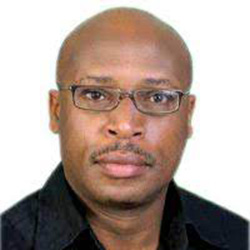I happened to pass by the Kigeme Refugee Camp in Nyamagabe District the other day. The camp is now full with some nearly 18,000 refugees, most of them from Masisi, eastern Democratic Republic of Congo.


I happened to pass by the Kigeme Refugee Camp in Nyamagabe District the other day. The camp is now full with some nearly 18,000 refugees, most of them from Masisi, eastern Democratic Republic of Congo.
Another 10,000 are being hosted at the Nkamira Transit Centre in Rubavu, before being transferred to the newly extended Nyabiheke and other refugee camps in Rwanda.
It is a terrible tragedy that so many people should be uprooted from their homes and livelihoods. This is as a result of the resurgence of activities of the myriad armed groups in eastern DRC.
A recent report by the UN Secretary General notes two major patterns resulting in the mass displacements. In the first, armed groups systematically target civilians to control areas rich in natural resources.
In the second, armed groups and elements of the Forces Armées de la République Démocratique du Congo (FARDC) retaliate against communities, often on the basis of real or perceived ethnicity of the survivors, for supposed political and economic gains.
There is a third reason: the proliferation of small arms and light weapons, the region and Africa’s most available tool in armed conflict.
About 30 million of the weapons are in circulation in sub-Saharan Africa. Some estimates put about 79 per cent of the small arms and light weapons in the hands of civilians.
Nineteen per cent are with police and military, and two per cent with armed groups and insurgents.
It is not to diminish the significance of such a huge number of weapons at large outside the disciplined forces, but it is a cruel irony that only two per cent of these arms are in the hands of armed groups and insurgents in eastern DRC are causing so much havoc on lives and property.
It does not matter the number of weapons. The proliferation of illicit small arms largely emanates from lack of proper regulations and the inability of governments in the region and Africa to exercise their authority.
As the Executive Secretary of the East Africa Action Network on small arms (EAANSA) memorably put it at a meeting in Kampala not too long ago, "How can the sale of mangoes be more tightly controlled than the sale of machine guns?”
There is also the problem of management of stockpiled ammunitions, a significant proportion of which somehow finds its way across borders all over the continent.
Aside from crossing borders, the arms are frequently recycled from country to country, and their ownership transferred among fighters, security forces and war profiteers.
In this manner, over 300,000 small arms and light weapons have been smuggled into the East African region in the past decade.
To account for the 79 per cent in civilian hands in sub-Saharan Africa, personal perception of insecurity, criminality, subsistence and cultural aspects leading, for instance, to cattle rustling, remain major drivers for the demand of small arms.
The sum effect is that small arms affect development. Physical and human resources are destroyed during conflict. Foreign investors are discouraged from such countries or regions. It does not take much to see that small arms and light weapons undermine or prevent development.
In 2004, 11 states in the Great Lakes and Horn of Africa regions signed the Nairobi Protocol, a legally binding document that compels the signatory states to, among other requirements, ensure mandatory gun registration and a ban on the civilian ownership of military assault rifles.
The Protocol requires the countries to incorporate provisions on small arms and light Weapons into their national laws.
It does not seem that the Nairobi Protocol has had much success in stemming the proliferation of the arms, which calls for a determined effort, both by the international community and the regional governments, to do so.
They may bear in mind the many personal tragedies of the survivors of the DRC conflict at Kigeme Refugee Camp, the most heinous being a result of gender-based violence rape being used as a weapon of war.
Twitter: @gituram


